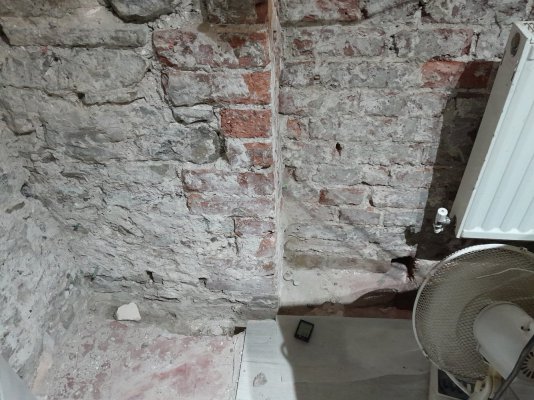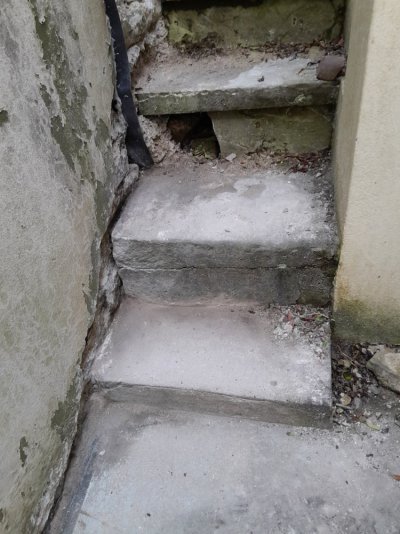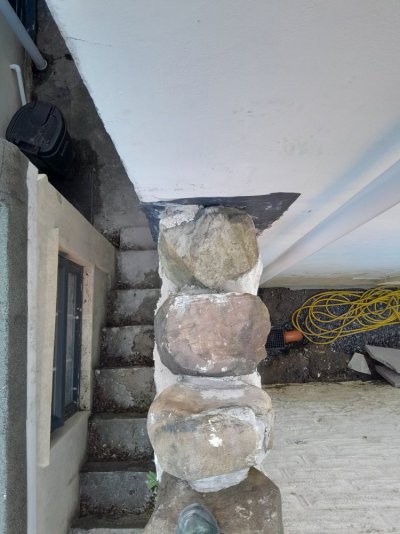Estane
Member
- Messages
- 21
- Location
- South Wales
Hey folks.
I'm currently in the process of dealing with a high water table at the back of a 1910s mid terrace house. The property sits at the bottom of a steep hill with steps up to a raised garden with a retaining wall. The previous owner had tried to treat symptoms internally rather than stopping the water getting into the brickwork - there doesn't appear to be a continuous DPC in place around most of the house, only the front bay window which is much newer. They'd laid a layer of gravel running from the bottom of the retaining wall to the back of the house and sealed it up with pavers and cement which was channelling ground water from the hill directly into the foundations. Now that I've removed the pavers and gravel I can see it pooling constantly, even in dry weather.
When investigating I found an old outhouse sewer connection (just underneath the downpipe thats hanging loose) that was buried underneath a few feet of soil. Theres now a french drain running along most of the retaining wall to divert the water into this with a P trap installed to prevent any gases escaping. The original drainage was relying on the pavers directing rain water into the drain and straight into the sewer in the third photo, but this didn't help with any of the ground water.
Underneath the steps also seems to be holding a lot of water, so I was thinking of digging a second trench around the remaining perimeter and boring a hole into the drain access where most of the water is going already. Once thats done I'd be looking to dig some of the clay out to bring ground level down a little, drop a membrane and some gravel before relaying the pavers.
Essentially it'd be mostly the same setup as before, with the pavers directing rain water into the drains, but also having the underground pipes to carry the ground water away as well.
I just want to make sure I'm not missing anything obvious before I go digging the rest of the garden up.
Many thanks.
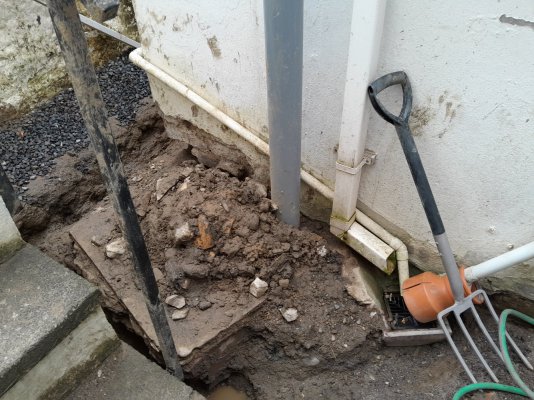
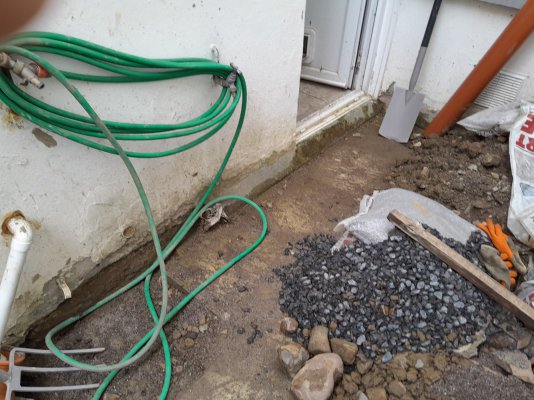
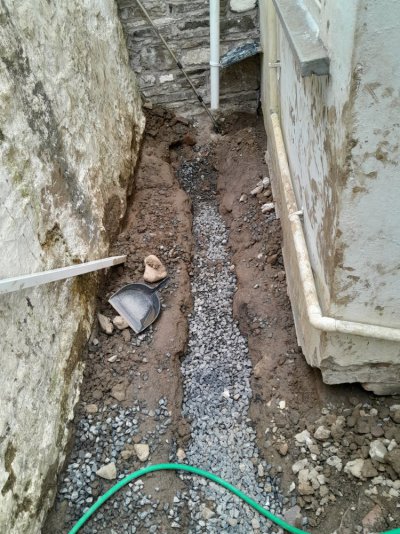
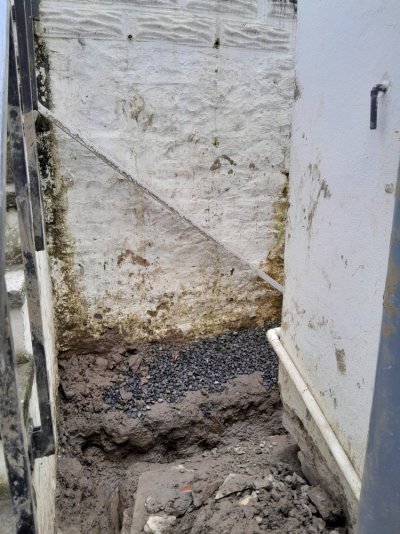
I'm currently in the process of dealing with a high water table at the back of a 1910s mid terrace house. The property sits at the bottom of a steep hill with steps up to a raised garden with a retaining wall. The previous owner had tried to treat symptoms internally rather than stopping the water getting into the brickwork - there doesn't appear to be a continuous DPC in place around most of the house, only the front bay window which is much newer. They'd laid a layer of gravel running from the bottom of the retaining wall to the back of the house and sealed it up with pavers and cement which was channelling ground water from the hill directly into the foundations. Now that I've removed the pavers and gravel I can see it pooling constantly, even in dry weather.
When investigating I found an old outhouse sewer connection (just underneath the downpipe thats hanging loose) that was buried underneath a few feet of soil. Theres now a french drain running along most of the retaining wall to divert the water into this with a P trap installed to prevent any gases escaping. The original drainage was relying on the pavers directing rain water into the drain and straight into the sewer in the third photo, but this didn't help with any of the ground water.
Underneath the steps also seems to be holding a lot of water, so I was thinking of digging a second trench around the remaining perimeter and boring a hole into the drain access where most of the water is going already. Once thats done I'd be looking to dig some of the clay out to bring ground level down a little, drop a membrane and some gravel before relaying the pavers.
Essentially it'd be mostly the same setup as before, with the pavers directing rain water into the drains, but also having the underground pipes to carry the ground water away as well.
I just want to make sure I'm not missing anything obvious before I go digging the rest of the garden up.
Many thanks.





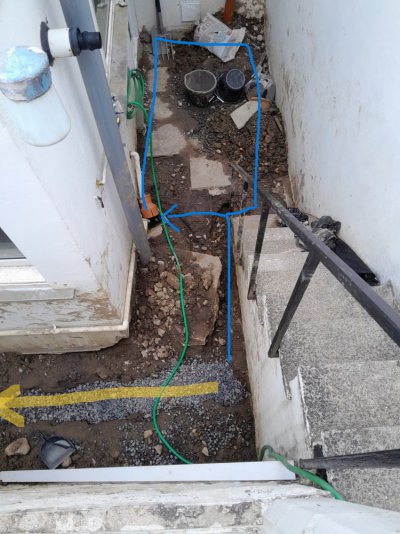
![20240721_130121[1].jpg 20240721_130121[1].jpg](https://www.periodproperty.co.uk/forum/data/attachments/9/9644-9bce0dcc34abe5e7d299cc8c8c1bd9c4.jpg?hash=m84NzDSr5e)
